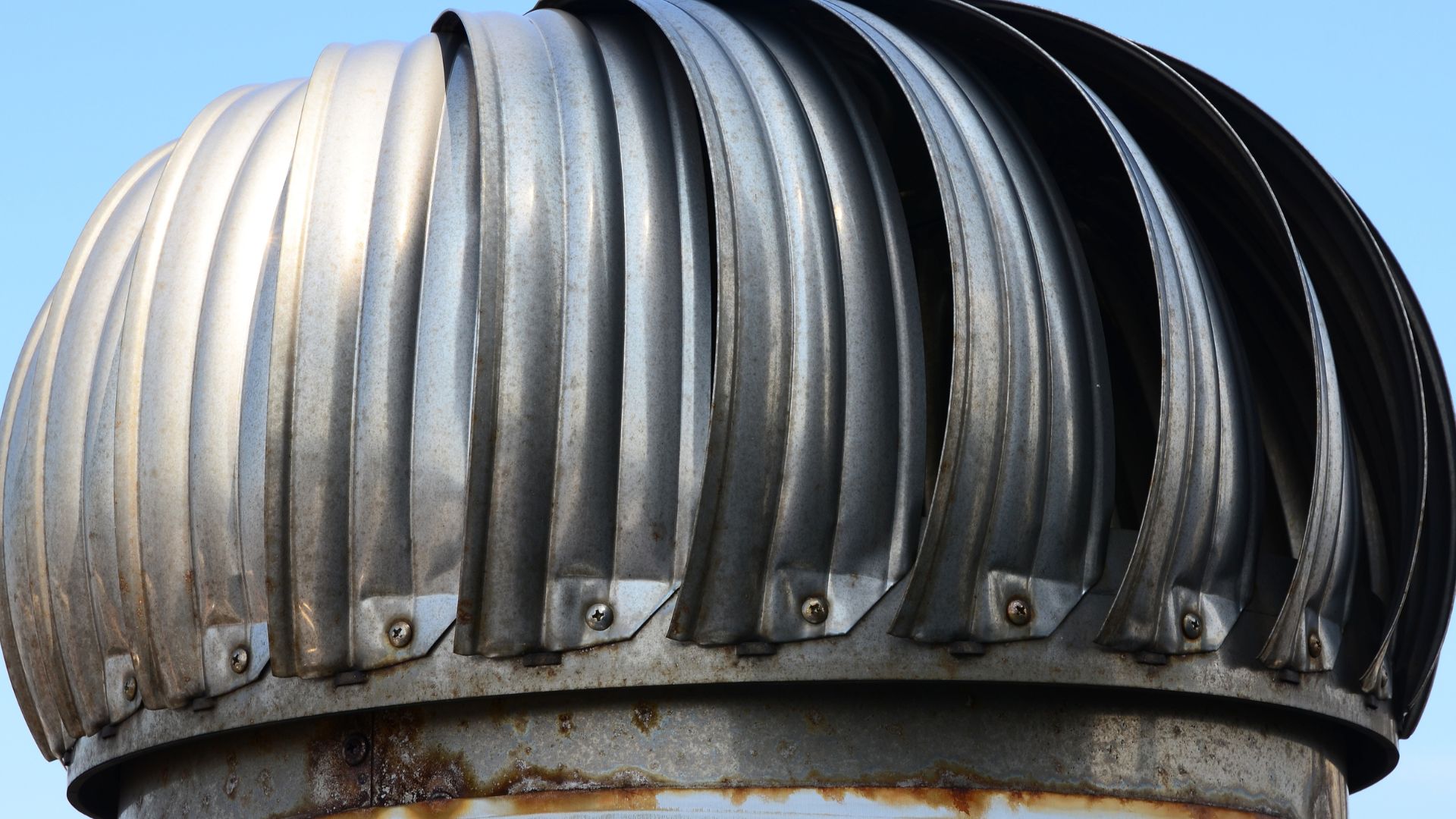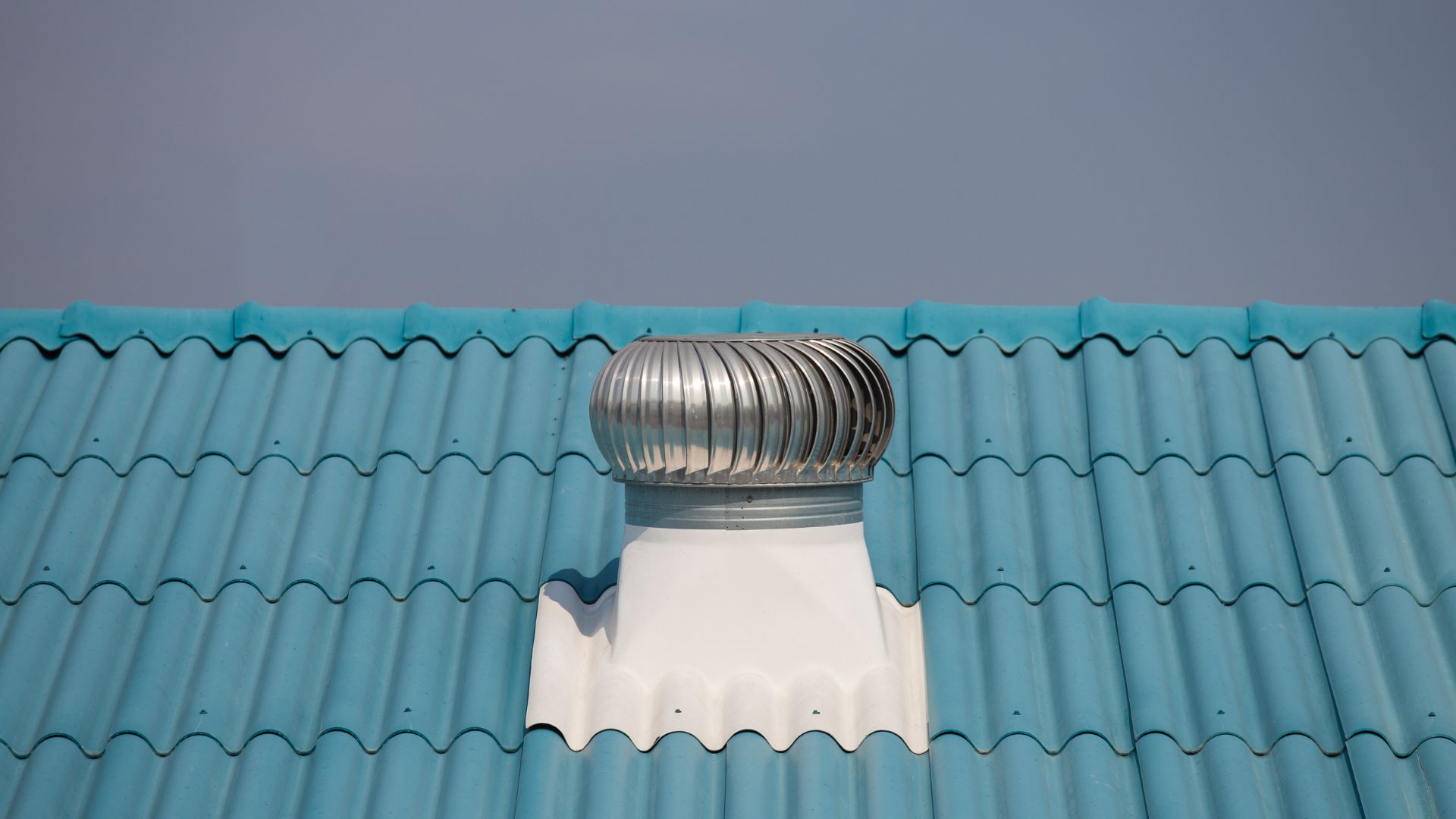Indoor air quality is a silent killer. A staggering statistic from the Medical Journal of Australia reveals the immense burden of disease linked to poor indoor air in European countries. This highlights the critical importance of proper ventilation in our homes and workplaces.
Whirlybirds, those familiar roof-mounted spinners, are often seen as a simple solution to this problem. But are they always effective? This blog aims to troubleshoot common issues with whirlybirds, helping you maximise their benefits and improve your indoor environment.
Common Whirlybird Issues
Whirlybirds, also known as roof ventilators, are common in many Australian homes. However, they can encounter several issues over time.

Noise
One frequent problem with whirly birds is noise. This often manifests as a squeaking or rattling sound.
Noise typically occurs due to the wear and tear of internal components, such as the bearings or the rotor. Exposure to the elements, including wind and rain, can exacerbate this wear, causing components to become loose or misaligned.
Lack of Rotation
Another common issue is a lack of rotation. When a whirlybird fails to spin, it cannot effectively ventilate the roof space.
This problem is usually caused by a build-up of debris, such as leaves, dirt, or bird nests, which can obstruct the rotor. Additionally, rust or corrosion of parts can lead to mechanical failure, preventing the whirlybird from rotating smoothly.
Leaks
Leaks are a significant concern for homeowners with whirly birds. Water can seep through the unit, especially during heavy rain.
This issue often arises from improper installation or damage to the flashing and seals around the whirlybird. Over time, exposure to harsh weather conditions can degrade these seals, allowing water to penetrate the roof space.
These common issues—noise, lack of rotation, and leaks—can reduce the effectiveness of whirly birds and lead to further damage if not addressed promptly.
Noise Problems and Solutions
Noise in whirly birds can be a nuisance, but understanding the causes and solutions can help maintain quiet operation.
Causes of Noise
Noise in whirly birds is often due to loose parts, rust, or worn bearings. Loose components can rattle as the wind turns the rotor. Rust can cause parts to rub against each other, creating a squeaking sound. Worn bearings can result in a grinding noise, as they struggle to support the rotor’s movement.
Solutions to Reduce Noise
- Inspect and Tighten Parts: Regularly inspect the whirlybird for any loose screws or bolts. Use a screwdriver or wrench to tighten them as needed.
- Lubricate Bearings: Apply a suitable lubricant to the bearings to reduce friction and noise. Ensure the lubricant is appropriate for outdoor use.
- Clean and Remove Rust: Clean the whirly bird’s components to remove any debris. Use a rust remover or a mixture of vinegar and baking soda to treat rusted areas.
- Replace Worn Bearings: If the bearings are worn out, replace them with new ones. Consult the manufacturer’s instructions for the correct type and installation process.
Tips for Maintaining Quiet Operation
- Regular Maintenance: Perform regular maintenance checks to catch and address potential issues early.
- Weatherproofing: Ensure the whirlybird is properly weatherproofed to prevent rust and corrosion.
- Balanced Installation: Make sure the whirly bird is installed correctly and balanced to avoid unnecessary strain on the components.
Whirly Bird Not Spinning
A whirlybird that isn’t spinning loses its effectiveness in ventilating the roof space. Identifying the reasons and applying the right fixes can restore its functionality.

Reasons for Not Spinning
Whirlybirds might stop spinning due to several factors. One common reason is insufficient wind or unfavourable wind direction, which can limit the rotor’s movement.
Mechanical faults, such as seized bearings or rusted parts, can also impede rotation. Additionally, blockages caused by debris like leaves, twigs, or bird nests can prevent the whirlybird from moving freely.
Practical Fixes
- Clear Blockages: Inspect the whirlybird for any debris that might be obstructing its movement. Remove any leaves, twigs, or nests to allow free rotation.
- Lubricate Bearings: Apply a high-quality lubricant to the bearings to reduce friction and ensure smooth operation. This is especially important if the whirlybird has been exposed to harsh weather conditions.
- Check for Rust: Examine the whirly bird for rust. Use a rust remover to clean affected areas, and consider applying a rust-proof coating to prevent future issues.
- Replace Faulty Parts: If certain components, like the bearings, are beyond repair, replace them with new parts as per the manufacturer’s guidelines.
Regular checks are crucial to maintaining the performance of a whirly bird. Routine inspections and maintenance can help identify issues early, ensuring the whirlybird continues to spin and effectively ventilate the roof space.
Leakage Issues
Leaks around whirly birds can cause significant damage to your roof and home if not addressed promptly. Understanding how these leaks develop and how to fix them is essential.
How Leaks Develop
Leaks around whirly birds often occur due to improper installation or deterioration of the flashing and seals. Over time, exposure to the elements can cause these materials to degrade, allowing water to seep through. Physical damage, such as cracks or gaps in the flashing, can also lead to leaks.
Identifying and Fixing Leaks
- Inspect for Damage: Regularly inspect the area around the whirlybird for signs of damage or wear. Look for cracks, gaps, or discolouration in the flashing and seals.
- Seal Cracks and Gaps: Use a high-quality roofing sealant to fill any cracks or gaps you find. Ensure the surface is clean and dry before applying the sealant.
- Replace Damaged Flashing: If the flashing is severely damaged, replace it with new material. Follow the manufacturer’s installation guidelines to ensure a proper seal.
- Check for Internal Leaks: Inspect the roof space for signs of water ingress, such as dampness or mould. Address any internal leaks promptly to prevent further damage.
Preventative Measures
- Regular Maintenance: Perform regular maintenance checks to catch and address potential issues early.
- Weatherproofing: Apply a weatherproof coating to the flashing and seals to protect against the elements.
- Proper Installation: Ensure the whirlybird is installed correctly according to the manufacturer’s instructions to prevent leaks from developing.
Regular Maintenance Tips
Regular maintenance is vital for ensuring whirly birds operate effectively and have a long lifespan. Neglecting maintenance can lead to issues such as noise, lack of rotation, and leaks, which can compromise roof ventilation and cause damage.

Routine Checks and Tasks
- Inspect for Debris: Regularly check for and remove any debris, such as leaves and twigs, that may obstruct the rotor or block soffit vents, which are essential for proper roof ventilation.
- Check Bearings and Lubricate: Inspect the bearings for wear and apply a suitable lubricant to ensure smooth operation, preventing airflow disruptions in turbine vents.
- Examine Flashing and Seals: Look for signs of damage or wear on the flashing and seals around roof vents. Repair or replace as needed to prevent leaks and maintain efficient ventilation.
- Rust Prevention: Check for rust on exhaust vents and treat affected areas with a rust remover. Apply a rust-proof coating to prevent future corrosion, ensuring continued airflow for removing hot air.
- Tighten Loose Parts: Ensure all screws and bolts are tight to prevent noise and mechanical failures, which can affect the performance of turbine vents.
Consistent maintenance ensures optimal performance and extends the lifespan of whirly birds. It prevents costly repairs, maintains effective roof ventilation, and protects your home from potential water damage. Regular upkeep also minimises noise, ensuring a quieter living environment.
Your Go-To for Whirly Bird Services
Successfully troubleshooting your whirly bird can significantly improve your home’s ventilation and overall comfort. However, some issues may require professional expertise. If you’ve tried the DIY solutions and still encounter problems, it’s time to call in the experts.
A.I Guttering and Roofing offer comprehensive whirly bird services, including installation, repair, and maintenance. Our skilled technicians can accurately diagnose the issue and provide effective solutions. Trust us to restore your whirly bird’s optimal performance. Contact us today to schedule an appointment.




